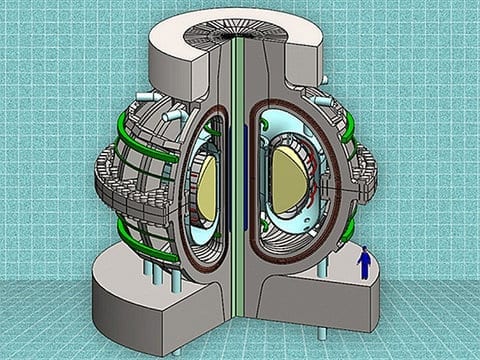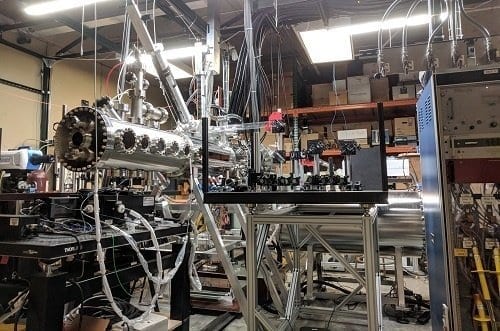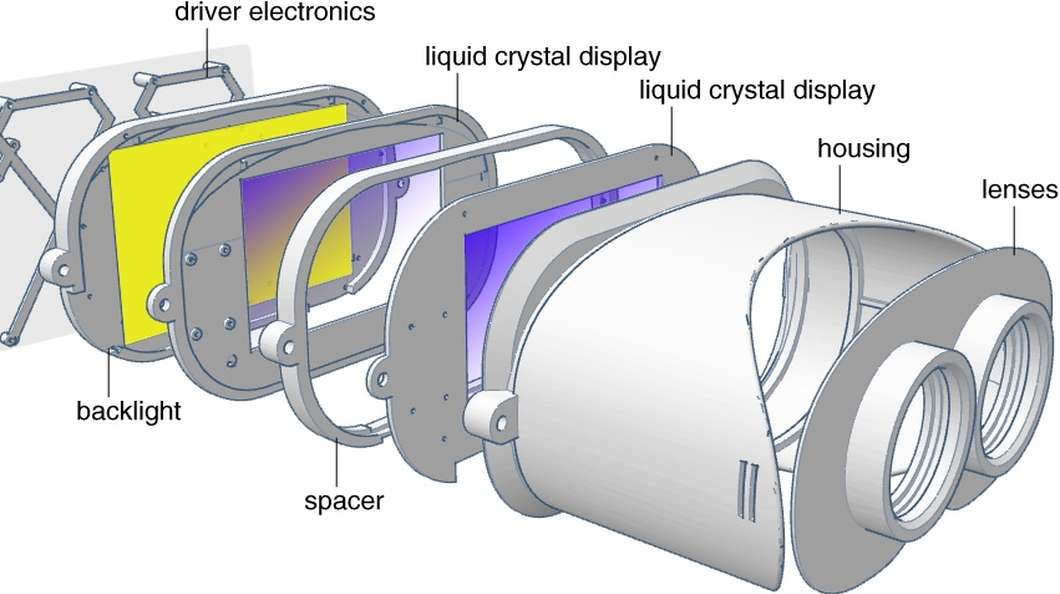
It’s a sure bet that the best known “arc reactor” in the world is the glowing energy source in the chest of Tony Stark, the inventor with a superhero complex at the heart of the “Iron Man” film franchise.
But within a decade, if a new level of funding flows, there may be a new contender — and one that isn’t fictional.
A team of researchers, building on work that began as a class project at the Massachusetts Institute of Technology, has published a design for an “ARC” demonstration-scale fusion energy power plant that could actually live up to the ambitious adjectives behind the acronym: “affordable, robust, compact.”
Below I’ve rounded up some useful coverage and descriptions of the research. I can’t do more at the moment because I’m tied up this week visiting the Institute for Applied Systems Analysis near (roasting) Vienna, one of the world’s top hubs assessing economic, population and climate trends, as well as energy and resource demands.
But first, I want to point out an important detail that you’ll hear more about as soon as I have time to dig in.
The obligatory acknowledgements note at the end of the paper mentions funding from the National Science Foundation and Department of Energy and thanks several people. But it also includes a line that will be particularly worth remembering if this design ends up breaking the “just 30 years away” spell that’s surrounded fusion research for more than half a century:
This work originated from a MIT Nuclear Science and Engineering graduate course.
The course is led by Dennis G. Whyte, a professor of nuclear science and engineering at the Massachusetts Institute of Technology and the new director of the school’s Plasma Science and Fusion Center. It’s no accident that Whyte’s mantra is “smaller and sooner.”
It’s exciting to see academia integrating directly with innovation on this scale. (There are other commercial “smaller and sooner” efforts under way, including a much-touted and much-discussed Lockheed Martin reactor design.)
The M.I.T. course recalls Inventor’s Studio, a course I learned about on a 2012 visit to Rensselaer Polytechnic Institute in which 20 seniors each year were challenged by engineering lecturer Burt Swersey to produce marketable innovations that are profitable, patentable and can improve the world.
With this in mind, I hope that Bill Gates’s planned investment push on game-changing renewable and nuclear energy innovation goes beyond a focus on specific technologies and includes support for academic models that can generate big breakthroughs.
But let’s get back to the ARC fusion power plant.
In his post at IFL Science, Jonathan O’Callaghan sets the right tone with this headline: “You Can Get Cautiously Excited About This Fusion Power ‘Breakthrough.’”
He writes:
The ARC reactor is simply a proposal for now, but the team said it could potentially be built in just five years. For comparison, construction on a huge $40 billion (£26 billion) experimental fusion reactor in France called the International Thermonuclear Experimental Reactor (ITER) began in 2013, and is expected to be completed in 2019. It was designed before these new superconductors were available.
Evan Ackerman at the engineering publication IEEE Spectrum sees few impediments to building one within a decade instead of the mythical 30 years:
We should point out, as the researchers do, that “a full engineering design is beyond the scope of the ARC study.” However, there’s no theoretical or technological showstopper preventing an engineering design for an ARC reactor to be developed. If it is, we could see a completed one up and running in as little as a decade. [Read the rest.]
The Latest on: ARC Fusion Power Plant
[google_news title=”” keyword=”ARC Fusion Power Plant” num_posts=”10″ blurb_length=”0″ show_thumb=”left”]
via Google News
The Latest on: ARC Fusion Power Plant
- First Light Fusion Makes Progress Towards an Economical Working Fusion Reactoron April 14, 2024 at 5:00 pm
They are aiming for a power plant producing ~150 MW of electricity, firing once every 30 seconds, and costing less than $1 billion. First Light Machine 4 First Light’s unique “inertial confinement” ...
- Eni says to build 1st nuclear fusion plant in early '30son April 9, 2024 at 6:04 am
Eni plans to build the first industrial fusion power plant in the early 1930s ... The first grid-connected industrial plant, CFS-ARC, is planned for the early 1930s, and new fully functioning ...
- Nuclear Fusion Is Not A Moonshot But An Attainable Goalon April 8, 2024 at 5:45 am
Physicists may remember December 5, 2022, as the day nuclear fusion got its legs and walked for the first time. That’s when the National Ignition Facility produced more energy than it used to ...
- General Fusion Partners With Canadian Nuclear Laboratories To Advance Commercial Power Plant Designon April 4, 2024 at 2:17 am
Now, General Fusion will leverage CNL's expertise, capabilities, and advanced facilities in power plant design, licensing, and operations. Specifically, CNL will support the design work underway ...
- Nuclear fusion power plant plan reaches 'major milestone'on April 3, 2024 at 10:27 pm
A company says it has reached a "major milestone" in its quest to design a power plant capable of producing energy from nuclear fusion. First Light Fusion, in Yarnton, Oxfordshire, has increased the ...
- Nuclear fusion power plant plan reaches 'major milestone'on April 3, 2024 at 5:00 pm
A company says it has reached a "major milestone" in its quest to design a power plant capable of producing energy from nuclear fusion. First Light Fusion, in Yarnton, Oxfordshire, has increased ...
via Bing News










